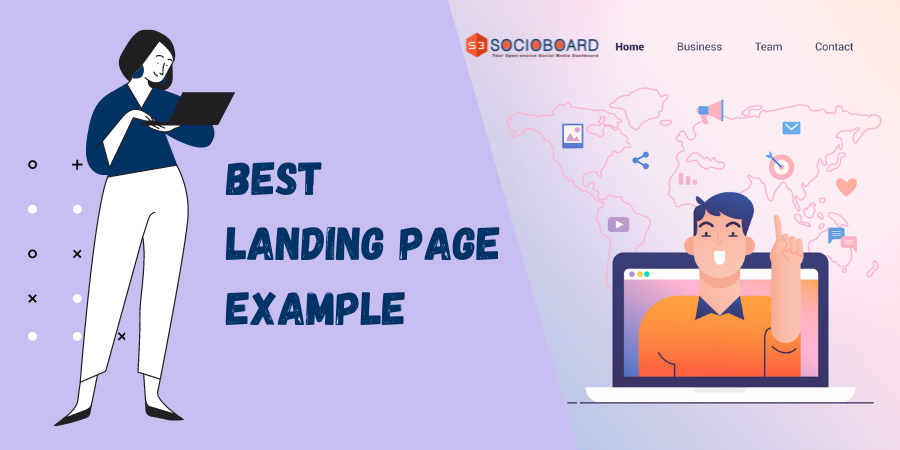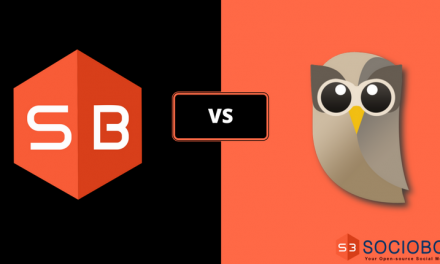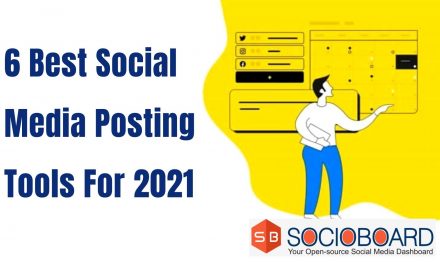As you plunge into the universe of digital marketing, SEO, and paid search advertising, you’ll probably experience a totally different jargon and set of ideas. If you haven’t as of now, you will undoubtedly have inquiries regarding how landing pages fit into your digital marketing strategy.
What is a Landing Page?
In digital marketing, a landing page is an independent website page, made explicitly for a marketing or advertising campaign. It’s the place where a guest “lands” after they click on a link in an email, or ads from Google, Bing, YouTube, Facebook, Instagram, Twitter, or comparative places on the web.
Dissimilar to website pages, which commonly have numerous objectives and empower exploration, landing pages are planned with a solitary focus or objective, known as a call to action (or CTA, for short).
It’s this center that makes landing pages the most ideal alternative for expanding the conversion rates of your promoting campaigns and bringing down your expense of gaining a lead or sale.
Different Types of Landing Pages
Utilizing landing pages empowers you to finish a post-click sequence with a committed page that shows the guest they have landed in the ideal spot. Occupied homepages or product pages can possibly sloppy the waters, though landing pages make it exceptionally clear what output will result from the visitor’s click-through. By making a landing page, you refine and further develop your visitor connection and accordingly increase the odds of conversion. You likewise guarantee that you get more from your PPC spend – you’ve as of now paid for this click, and a landing page assists you with making it worth your time and energy. You can increase the chance of conversions much further by guaranteeing that you utilize the right sort of landing page.
Types of landing pages and what they are utilized for.
Landing Page vs. Website Homepage
First of all, some people may wonder why they should bother with landing pages when the primary objective is to drive visitors to their homepage? The answer is that, while getting traffic on your home page is undoubtedly a good thing, it is less likely to result in a conversion than a landing page. Home pages contain a lot of information and invite users to navigate to a variety of different locations. If a visitor reaches your homepage with one specific goal in mind, they might be turned off if they have to look through several different services and product options first. The homepage’s main objective is to direct users to other pages where they will find the information they want. Landing pages eliminate the intermediary step by being the page the user wants – and stating as much in no uncertain terms.
Your homepage is general where a landing page is focused and specific. While the homepage draws visitors further into your website by presenting all the options your business has to offer, a landing page offers one simple and clear call to action.
Lead Generation Landing Page
A lead-generation or lead-capture landing page is basically planned to collect leads through a data catch structure. These pages are extremely adaptable however are frequently utilized in the business channel, where customers are assessing your offerings and are on the cusp of moving towards the purpose to either convert or leave. It presents both a request and a reward at the same time. The reward is the particular proposition you are elevating to catch leads, and the request is the information you request in your structure. The request and the reward ought to be even. Whatever you are promoting should merit the customer offering their subtleties and adding them to your mailing list.
Click-Through Landing Page
As opposed to the lead-generation page, which depends on the utilization of a structure, a click-through page is, by definition, one that doesn’t need a structure by any stretch of the imagination. It is a basic agent between your advert and the page to which you eventually wish to coordinate your customers. It is generally used to interface an ad to a shopping cart for instance. It requires just a basic and short clarification of what the visitors have found by clicking through a bold and indisputable call to action with a link to the last objective.
Thankyou Page
Although an in-line thank you message is accessible in many tools, it is suggested that you supply your new lead with a dedicated thank you page. Thank you page includes a “download now” button that new leads can click to get the download you presented on the landing page. As well as facilitating the proposition, thank you pages are an amazing method to proceed with the conversion process and drop the lead down the marketing funnel. Secondary offers (case studies, consultations, webinars, and that’s just the beginning) ought to be shown by means of another structure or explicit CTAs on the thank you page to urge the lead to go straight away.
Driving Traffic to Landing Pages
You’re going to need to fill that funnel full of visitors for your landing page to work. Fortunately, you’ve got a lot of options. Let’s explore some of the more common sources of traffic to landing pages.
Paid Search Traffic
Most search engines include paid advertising. When someone looks something up (say, “cheese of the month club”) these ads appear clearly marked—but not too clearly marked—in the search results. Here’s a typical example from Google:
Screenshot of a typical Google Ad
Unlike the other results on the page, pay-per-click ads are prepared and paid for by marketers. Someone who clicks will be primed by your charming copy (and, sometimes, your visuals). And you’ve likely targeted them based on their search term, demographic data, or interests revealed by their browsing history.
Crucially, when you create an ad, you get to choose where the link takes your visitor. Yes, you could choose to send them to your homepage. But, as we’ll explore below, it’s much better to create a standalone landing page that matches your ad copy and offers a clear call to action.
Paid Social Traffic
Running ads on social media sites like Facebook, Instagram, Twitter, or LinkedIn is a kickass way to target people and communities who’ll be particularly interested in your brand, regardless of whether they’re in the market yet.
Instead of people searching for “cheese of the month club,” you might advertise to people who’ve added “cheese appreciation” to their list of interests in their Facebook profile. The beauty of it is that you can connect with customers before they start to look for your product—or before they want it!
Aside from offering advanced targeting features, each social channel has its own characteristics. Instagram, for example, works well for products and lifestyle brands with a strong visual appeal. On the other hand, B2B advertisers prefer to use LinkedIn to reach professionals working in specific industries.
Email Campaigns
Email is often touted as the most effective marketing channel out there because of its enormous reach (and low costs) compared to other platforms. A 2018 study by the Radicati Group projects that there’ll be 4.2 billion email users by 2022. That’s more than half the planet!
A powerful combo of emails and landing pages can be used both to nurture existing relationships with customers and to acquire new ones. After building a list of contacts, your carefully crafted email lets you entice readers with your offer, while the landing page fills in the details and directs visitors toward a call to action.
Organic Search Traffic
The term “organic traffic” refers to any visitors who come from an unpaid source—like the bottom half of Google or Bing search results (SERPs). By creating compelling, legitimately useful content on your website or landing pages, you can ensure that your business appears more frequently in related searches. The higher your content ranks, the better.
Calling it “unpaid” is a little bit misleading, however. It doesn’t mean there isn’t time and money invested in ranking. (If only!) There’s an entire field of professionals dedicated to squeezing as much organic traffic from Google as possible through a balance of careful strategy, technical know-how, and brilliant content creation. What’s search engine optimization (SEO) in a nutshell.
Conclusion:
This aide has assisted you with understanding landing pages by addressing key inquiries regarding what they are and how they work. Here is a fast recap:
- Landing pages are objections for marketing or advertising efforts, assisting organizations with producing leads or sales.
- Each landing page centers around a solitary source of inspiration.
- You needn’t bother with your own website to make a landing page.
- Since you need an alternate landing page for each mission, it’s fine to have multiple landing pages.
Also Read
How To Manage Social Media Effectively in 2021?






![5 Things You Must Know About UX/UI Designing [2021 Update]](https://blog.socioboard.com/wp-content/uploads/2019/10/5-Must-Know-Lessons-For-UX_UI-Designing-4-440x264.png)


Recent comments